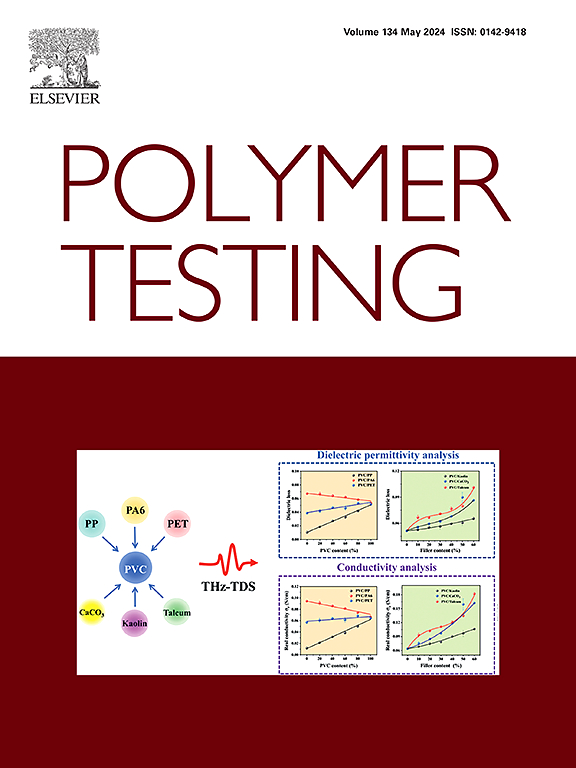Complexes of polymeric acids and short polyamines as binary stimulus-sensitive systems
IF 5
2区 材料科学
Q1 MATERIALS SCIENCE, CHARACTERIZATION & TESTING
引用次数: 0
Abstract
Stimulus-sensitive polymers are of great interest due to their unusual properties in solution and diverse applications. Copolymers with different groups (hydrophilic, hydrophobic and ionizable) are typical stimulus-sensitive polymers, and varying the copolymer composition allows the pH and thermal sensitivity to be adjusted for a particular application. We found that complexes of polymeric acids with short methylated polyamines having trimethylene insertions between amine groups exhibit stimulus-sensitive properties in aqueous media at moderate pH and temperature. The position of the lower critical temperature of the solution depends on the ratio of polyacid to polyamine and on the pH. The complex of poly(acrylic acid) and pentaamine was found to be electrosensitive: exposure to an electric field with reversible polarity (8 Hz) led to precipitation of the polymer. These binary stimulus-sensitive compositions consist of two simple substances and are a promising alternative to copolymer-based systems, since the adjustment of properties does not require the synthesis of new substances and expensive toxicological studies in the case of biomedical applications.
作为二元刺激敏感系统的聚合酸和短聚胺复合物
刺激敏感聚合物因其在溶液中的特殊性质和多种多样的应用而备受关注。具有不同基团(亲水基团、疏水基团和可离子化基团)的共聚物是典型的刺激敏感聚合物,改变共聚物的组成可以调节 pH 值和热敏感性,以适应特定的应用。我们发现,在中等 pH 值和温度的水介质中,聚合酸与胺基之间具有三亚甲基插入物的短甲基化多胺的复合物具有刺激敏感性。溶液较低临界温度的位置取决于聚酸与多胺的比例和 pH 值。研究发现,聚丙烯酸和五胺的复合物具有电敏感性:暴露在极性可逆的电场(8 赫兹)中会导致聚合物沉淀。这些对刺激敏感的二元复合物由两种简单的物质组成,是基于共聚物的系统的一种有前途的替代品,因为在生物医学应用中,调整特性不需要合成新物质和进行昂贵的毒理学研究。
本文章由计算机程序翻译,如有差异,请以英文原文为准。
求助全文
约1分钟内获得全文
求助全文
来源期刊

Polymer Testing
工程技术-材料科学:表征与测试
CiteScore
10.70
自引率
5.90%
发文量
328
审稿时长
44 days
期刊介绍:
Polymer Testing focuses on the testing, analysis and characterization of polymer materials, including both synthetic and natural or biobased polymers. Novel testing methods and the testing of novel polymeric materials in bulk, solution and dispersion is covered. In addition, we welcome the submission of the testing of polymeric materials for a wide range of applications and industrial products as well as nanoscale characterization.
The scope includes but is not limited to the following main topics:
Novel testing methods and Chemical analysis
• mechanical, thermal, electrical, chemical, imaging, spectroscopy, scattering and rheology
Physical properties and behaviour of novel polymer systems
• nanoscale properties, morphology, transport properties
Degradation and recycling of polymeric materials when combined with novel testing or characterization methods
• degradation, biodegradation, ageing and fire retardancy
Modelling and Simulation work will be only considered when it is linked to new or previously published experimental results.
 求助内容:
求助内容: 应助结果提醒方式:
应助结果提醒方式:


